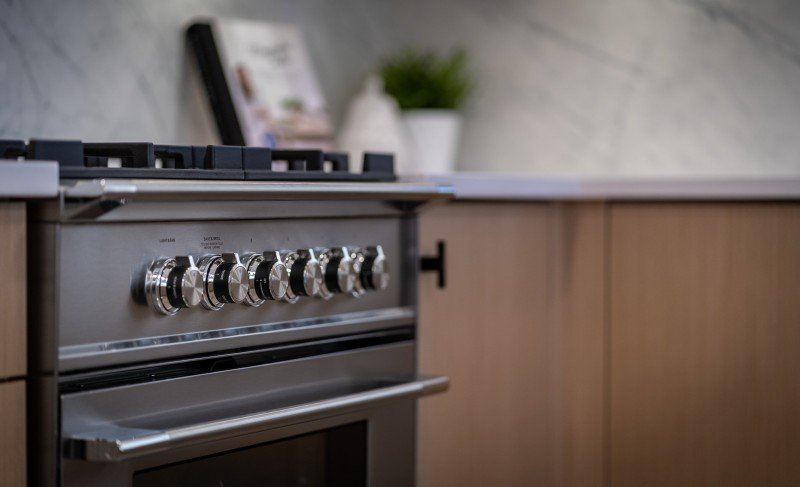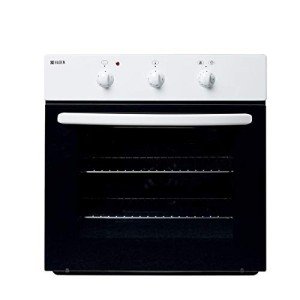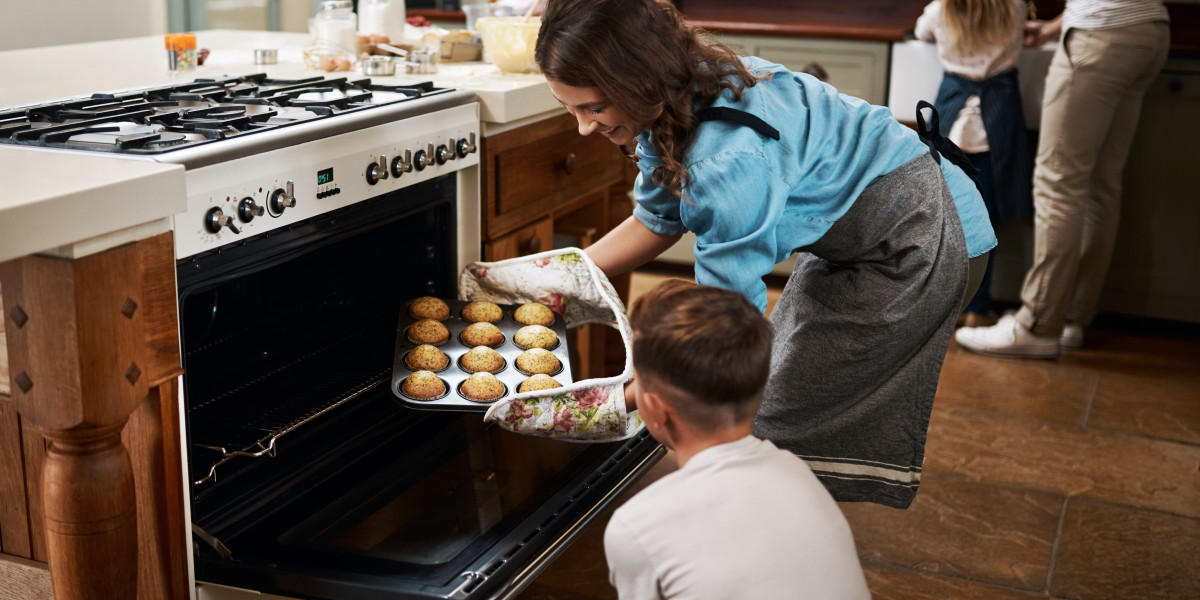 Choosing an Oven With Hob
Choosing an Oven With Hob If you're planning to build the construction of a new kitchen, or looking to upgrade your current appliance, an oven that has a hob could be the perfect solution.
If you're planning to build the construction of a new kitchen, or looking to upgrade your current appliance, an oven that has a hob could be the perfect solution.Ovens that have a hob are available in both electric and gas cookers. Gas cookers come with an array (usually four) of burners as well as an oven. Electric cookers come with an oven as well as a surface to cook on.
What is hob?
The primary component of the stove is the hob (also called a cooker top or cooktop). This is where you heat your pots. They are available in gas, electric and ceramic varieties. Some models have dual fuel burners, combining the quick cooking times of an electric oven with the instant heat of a gas stove.
A hob is available as a standalone piece of equipment, or as part of an integrated kitchen. When selecting a hob you must be aware of its dimensions and energy efficiency as well as its ease of operation. It is also important to decide which type of hob is ideal for your cooking style. Different models offer different levels of performance.
Gas hobs, like are popular among those who like stir-frying and cooking because they are easy to use and provide instant heat. Induction hobs are the ideal option for those who want to keep your kitchen as tidy as possible. They are able to heat the pan directly with electromagnets. They only require electricity when you're actually cooking, and then shut off immediately when the pan is removed from the stove.
If you're considering installing an appliance, be aware that it is essential to have a functional gas pipe before installing one. This will ensure that your hob is safe and that you won't run into any problems when it comes to cooking.
The type of hob you choose will determine the controls that are available. On gas and solid sealed plate hobs you can adjust the heat using the rotary controls. Touch controls are usually found on induction or ceramic hobs. They let you select the desired setting at your fingertips. Certain hobs are equipped with child safety locks, so that your children and guests can't accidentally alter the settings.
If you're a passionate cook, it might be worth purchasing a kitchen appliance with additional features, such as a pause function or a timer. They can help you to cook at a time and can help to avoid overcooking or burning your food. You can also reduce time and effort if you make your kitchen more efficient.
What are the benefits of a stove?
A hob can be an excellent addition to any kitchen, offering advantages like ease of use, energy efficiency and compatibility with all kinds of cookware. When choosing the right hob, it is important to be aware of other aspects like price and lifestyle compatibility.
One of the most popular kinds of hobs is the gas hob. They are easy to use and provide an excellent level of heat control, however, they require a gas connection which is not available in every home. They also take longer to heat up and cool down, which can make them less practical for cooking in the everyday.
Induction hobs are a different option that provide a sleek and efficient solution. They work by creating an electromagnetic field around the pan to ensure that only the cookware gets hot and not the surface of your hob. They are safe, easy-to-clean and can boil water in seconds. However, they're more expensive than other types of hobs and are only compatible with pans made of metal, ideally made from cast iron or 18/10 steel. Induction hobs may affect pacemakers since they generate magnetic fields.
Another kind of hob is a combination gas and electric model. This is a great option for those seeking the flexibility of induction and gas but don't want to invest much. They let you switch between them, for example sauteing on the gas side while simmering on the induction making it possible to cook more complex dishes while saving money in the long run.
Other features that can be found on numerous hobs include the ability to pause, which allows you to stop heating for all active zones at once which helps prevent accidents in kitchens with a lot of activity. There are also control and child locks, which prevent children or other persons from unintentionally changing the settings.
Many hobs come with a drip tray that can be removed or spillage tray, which makes cleaning easier. A few squirts of kitchen cleaner ought to be enough to keep most surfaces clean, but stubborn marks and stains are often removed using a specialist hob scraper.
What is the difference between a hob and an oven?
Hobs are used to cook pots and other cooking vessels. There are a variety of types of hob available, including gas, electric and induction hobs. Some of them have features that make cooking more convenient while others are just decorative.
Ceramic hobs, for example are renowned for being elegant and easy to clean. They use electrical energy to heat the components beneath the glass surface, which transmits heat directly to pans. They are extremely energy efficient and efficient, since they only heat your pans. They take longer to heat and cool and are more vulnerable to chips and scratches when not taken care of.
Another kind of hob is the gas on glass model. These are similar to traditional gas hobs, yet have the added benefit of a elegant and elegant glass finish. There aren't any flames or hot burner rings to worry about, so they are easier to clean. They're more expensive and it may be difficult to find replacement parts if they fail.
Induction hobs, on other hand are a more contemporary and energy efficient option. Electromagnets generate electricity, which warms the bottom of pans instead of the surface. They are extremely quick to warm up and cool down. They are also safe since they only heat up when you place a pan in the zone. However, they're only compatible with certain kinds of pans (usually steel or cast iron) and can be more expensive than other hobs.
There are dual-fuel models that incorporate an electric oven and gas stoves to give the best of both. This is the perfect appliance for those who want an appliance that is multi-purpose and can boil, fry and cook food as well as warm it up.
How do I install a hob?
Selecting a oven and hob that work well together, particularly in a kitchen with a small space requires careful planning. The cooker must be low enough to fit under the hob, and if it has an overhang, make sure it doesn't hinder the ability to reach into and out of the oven. This can be accomplished with a drop down door.
Also, consider the height of your cooktop and oven. It may be difficult to lift the hot roasting pan when it is too low. If you have children, you should think about the distance of the cooktop to them. Built-in hobs are within easy reach of kids, whereas freestanding cooktops are usually higher and can be pushed back to the back splash to provide security.
The best hobs (www.Ovensandhobs.uk) for you will differ based on your lifestyle, the frequency you cook, and whether you want an electric or gas-powered hob. If you entertain guests often an oven with a bigger capacity may be better suited to your needs. Likewise, if you love to bake and cook, then an electric oven with a stove is an ideal choice, as it allows you to simultaneously cook and bake.
It's important to keep in mind that your household electrical setup will need to be able to cope with the power of the appliance you select. It can be costly to add a new electric appliance or switch from gas to electricity. It is necessary to rewire the entire kitchen.
The safest way to install your new appliance is to have it hardwired by a professional electrician. Using an extension lead or adapter can be dangerous and could cause damage to your appliance.
Make sure the electrician is qualified and endorsed by a professional body such as Trusted Traders. This will help you locate a local electrician who has the right expertise to complete the task. It's also important to ask for estimates from a variety of tradespeople, as the price can vary significantly. You can find reputable tradespeople in your area using the search engine online accessible on our website.








